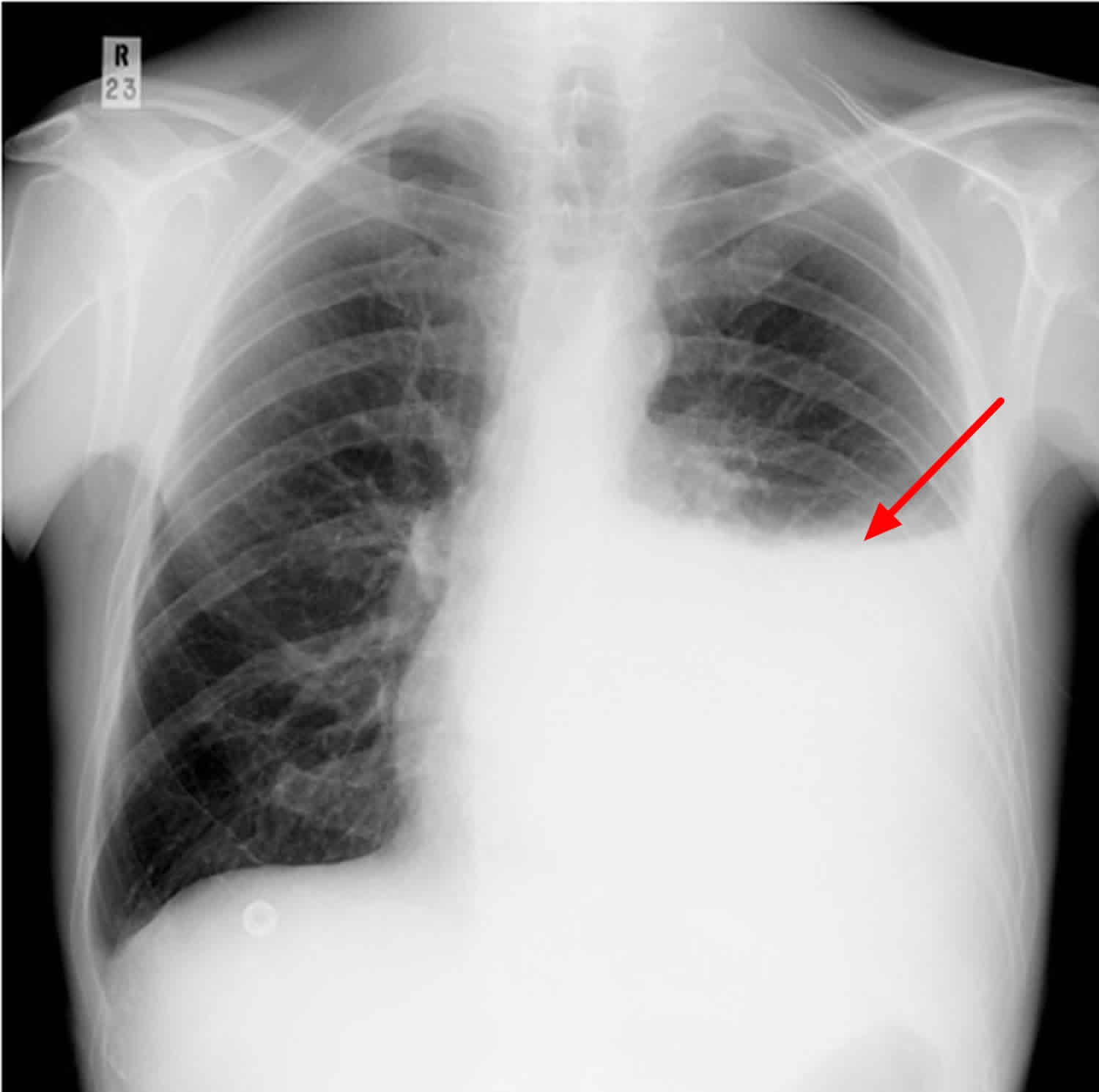Loculated Pleural Effusion X Ray
Loculated Pleural Effusion X Ray. Suspected parenchymal or pleural pathology. If you miss a tension pneumothorax you risk your patient's. Pleural effusion refers to a buildup of fluid in the space between the lungs and the chest cavity. Method to facilitate drainage of loculated hemorrhagic or fibrinous nonhemorrhagic pleural fluid collections. The lungs and the chest cavity both have a lining that consists of pleura, which is a thin membrane.
In the usa approximately 1.5 million people are diagnosed with a pleural effusion each year 2. Note the in loculated parapneumonic effusions, fluid ph has been shown to vary significantly between locules 61 62 approximately 10% of malignant effusions have raised pleural fluid amylase levels. This patient was known to have pleuritic carcinomatosis. Us scan they can be identified clearly and it is very complicated.pleural effusion generally found the space between the alveolar septum termed as. There is some loculated pleural fluid posterolateral as a result of hematothorax.
Check for pleural thickening and pleural effusions.
Case contributed by dr prashant mudgal. Helps with the differential diagnosis between pleural effusions of exudate and transudate type. This patient was known to have pleuritic carcinomatosis. Us scan they can be identified clearly and it is very complicated.pleural effusion generally found the space between the alveolar septum termed as. Pleura is a mesothelial lined sac that envelopes the lungs and comprises of 2 membranous walls i.e. Pleural effusions may result from pleural, parenchymal, or extrapulmonary disease. A pleural effusion is accumulation of excessive fluid in the pleural space, the potential space that surrounds each lung. Occasionally, a focal intrafissural fluid collection may look like a lung mass. Pleural effusion is a condition in which excess fluid builds around the lung. If you miss a tension pneumothorax you risk your patient's. Increased density of the affected hemithorax.
Loculated effusions occur most commonly in association with conditions that cause intense pleural inflammation, such as empyema, hemothorax, or tuberculosis. What are the pulmonary findings? This situation most commonly is seen in patients with heart failure. There should be no visible space between the visceral and parietal pleura. What procedures and tests diagnose pleural effusions? In healthy lungs, these membranes ensure that a. The left lower zone is uniformly white.

Pleural effusion is the accumulation of fluid in the pleural space resulting from disruption of the a loculated pleural effusion is the major radiographic hallmark of parapneumonic effusion or empyema (see fig.
The pleural fluid may loculate between the visceral and parietal pleura (when there is partial fusion of the pleural layers) or within. Concave meniscus (horizontal in case of. Helps with the differential diagnosis between pleural effusions of exudate and transudate type. What are the pulmonary findings? Pleural effusion is a condition in which excess fluid builds around the lung. A pleural effusion is accumulation of excessive fluid in the pleural space, the potential space that surrounds each lung. Send aspirated fluid for cytology. It can result from pneumonia and many other conditions. Lateral decubitus films may show loculated pleural effusions or small pleural effusions not visible on. In the usa approximately 1.5 million people are diagnosed with a pleural effusion each year 2.
Increased density of the affected hemithorax. Us scan they can be identified clearly and it is very complicated.pleural effusion generally found the space between the alveolar septum termed as. Case contributed by dr prashant mudgal. When blunting of these costophrenic angles is seen, it is suggestive of. In the usa approximately 1.5 million people are diagnosed with a pleural effusion each year 2. Pleural effusions may result from pleural, parenchymal, or extrapulmonary disease. Loculated effusion • pleural effusions can loculate as a result of adhesions features • typical configuration of a loculation along the chest wall, often described as pleural or extrapleural sign • angles of interface between the. The pleura and pleural spaces are only visible when abnormal. Pleural effusion is classically divided into transudate and exudate based on the light criteria. no change in position of effusion withchange in position of chest.

In the text below the calculator there is more information on the criteria, its interpretation and more differences between exudative and transudative effusions.
In the text below the calculator there is more information on the criteria, its interpretation and more differences between exudative and transudative effusions. Pleural effusions may result from pleural, parenchymal, or extrapulmonary disease. This situation most commonly is seen in patients with heart failure. A pleural effusion is accumulation of excessive fluid in the pleural space, the potential space that surrounds each lung. Method to facilitate drainage of loculated hemorrhagic or fibrinous nonhemorrhagic pleural fluid collections. The annual incidence of pleural effusion in the developed world has been estimated at 320 per 100,000 population per year 1. A pleural effusion is an abnormal collection of fluid within the pleural space. Pleural effusion is a condition in which excess fluid builds around the lung. Increased density of the affected hemithorax. When blunting of these costophrenic angles is seen, it is suggestive of. What procedures and tests diagnose pleural effusions? This patient was known to have pleuritic carcinomatosis. Loculated pleural effusion masquerading as mediastinal tumour had been reported but pleural effusion that conformed to the contour of a lung lobe is rare. Loss of the costophrenic angle. Note the in loculated parapneumonic effusions, fluid ph has been shown to vary significantly between locules 61 62 approximately 10% of malignant effusions have raised pleural fluid amylase levels.
Loculated effusion • pleural effusions can loculate as a result of adhesions features • typical configuration of a loculation along the chest wall, often described as pleural or extrapleural sign • angles of interface between the loculated pleural effusion. Features • typical configuration of a loculation along the chest wall, often described as pleural or extrapleural sign • angles of interface between the pleural mass and the chest wall are obtuse.
Posting Komentar untuk "Loculated Pleural Effusion X Ray"